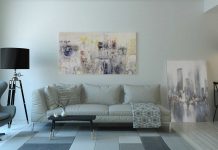Visual hierarchy is the practice of assigning relative prominence to various design components in a website’s layout. The objective is to make it easy for the user to scan the page and get the necessary information. The study of visual hierarchy is becoming more critical in the quest to enhance the user experience and drive organizational objectives.
In this article, we’ll go into the fundamentals of visual hierarchy in web design and discuss the best practices for implementing them. Continue reading before you look for Orlando web designer.
Understanding the Elements of Visual Hierarchy
Web designers use visual hierarchy to strategically place design aspects on their perceived significance to the user experience. With this structure, the website’s intended message and content may be conveyed clearly to visitors. Color, typeface, size, contrast, and white space are all components of visual hierarchy. Designers use these components to lead the user’s focus to the information they need.
Color has a crucial role in the visual ordering of objects. It may evoke strong feelings in the person and communicate nuanced ideas. The color blue, for instance, is often used to represent trust, whereas the color red may be used to indicate urgency. Color often emphasizes essential details and provides aesthetic appeal in web design. Color is a powerful tool for designers to draw attention to CTAs, links, and other focal points.
The use of typography greatly aids visual hierarchy. Choosing legible and consistent fonts, sizes, and weights is a crucial part of this process. The use of appropriate typography may aid in creating a logical reading order of content. Designers use bigger font sizes and bold typefaces to emphasize headlines and calls to action. The secondary and body content are written in smaller, lighter typefaces.
The Importance of Proper Use of Colors
Color is an effective technique in web design for influencing user mood and emotional response. Brand recognition, communication, and emphasis may all be improved with the strategic use of color in site design. Selecting complementary hues and maintaining that palette across the page is crucial for establishing visual order.
The color palette is one of the most essential parts of utilizing color on a website. Colors in a brand’s palette are chosen because they complement one another and contribute to the overall visual language of the brand. To produce a pleasing color palette, designers often pair similar hues together. They employ contrasting colors to draw the eye and draw attention to critical features.
Typography’s Role in Visual Hierarchy
In web design, typography is crucial in establishing a visual hierarchy, and using different fonts, sizes, and weights provides a page’s visual hierarchy. The appropriate typography may make the text easier to read and give a more polished page appearance.
Color psychology is another crucial part of web design, including color. The field of research known as “color psychology” looks at how various hues and tones affect people’s thoughts, feelings, and actions. Designers use this information to set a specific tone and elicit a particular response from the reader. Red is generally used to represent urgency and intensity, whereas blue is often utilized to convey trust and stability.
The Role of Spacing in Visual Hierarchy
Visual hierarchy relies heavily on the use of space. Having enough white space between design components is essential for a well-balanced website layout. The establishment of order and harmony is aided by this method as well. Use white space to divide the page into several parts and highlight specific details from Orlando web designer. Visual hierarchy also relies on size.
The size of a design element on a page is a relative term; more significant pieces command more visual real estate. Using contrasting hues or light intensities helps focal points leap off the page. Having enough white space between design components is essential for a well-balanced website layout.
Conclusion
Effective web design relies heavily on the use of a clear visual hierarchy. Designers’ ability to create user-friendly and enjoyable interfaces depends on their familiarity with the principles and practices of visual hierarchy.
A well-designed visual hierarchy may aid users in locating the information they need and accomplishing corporate objectives via color, typeface, space, and contrast. It is the designers’ job to make it easy for consumers to browse a website and make educated selections by establishing a clear information hierarchy.




















